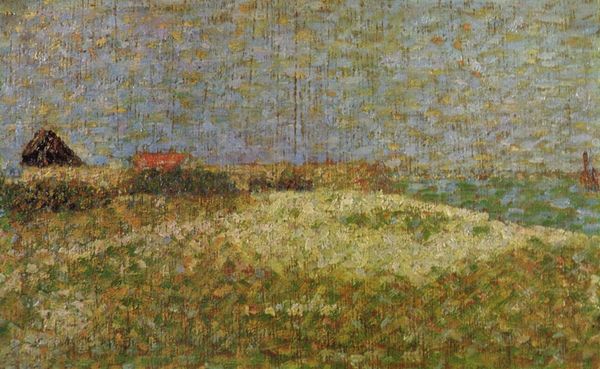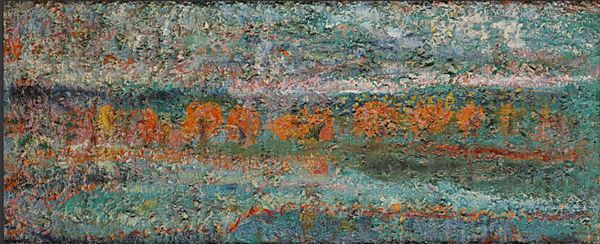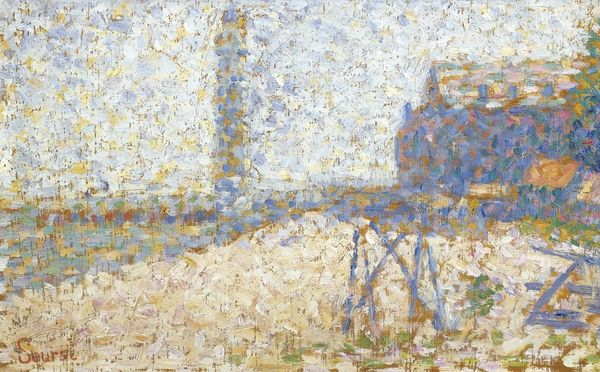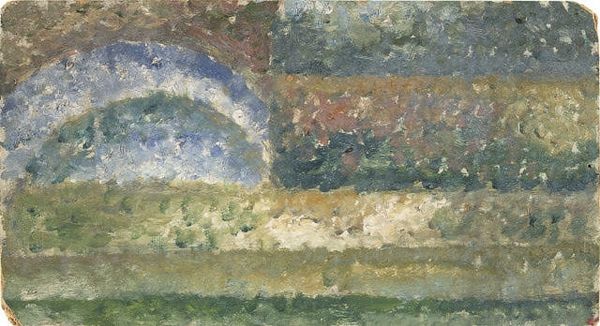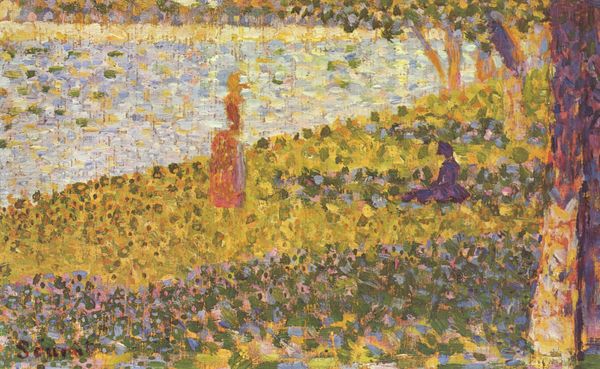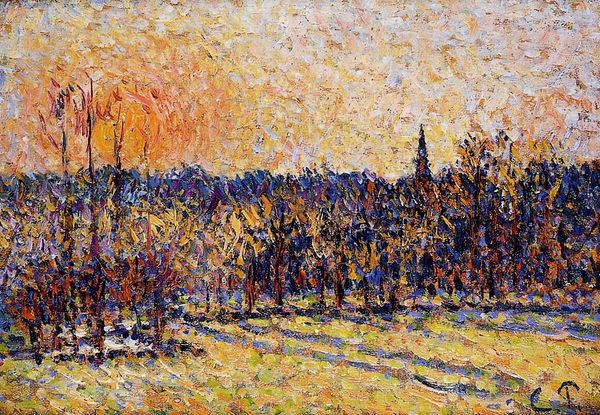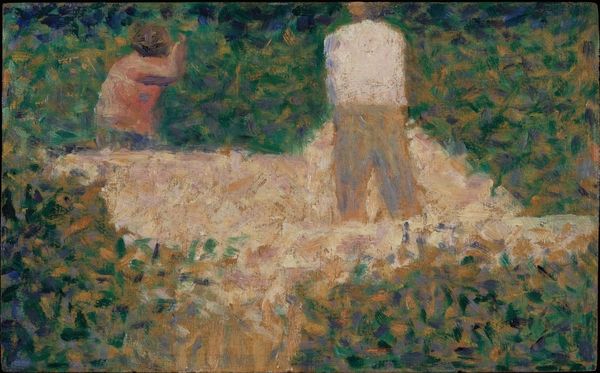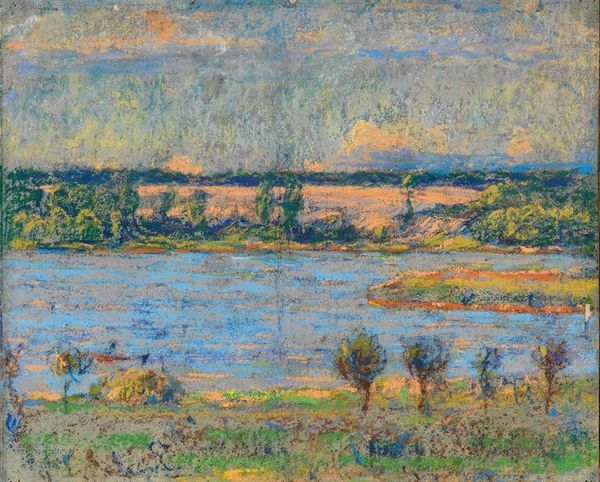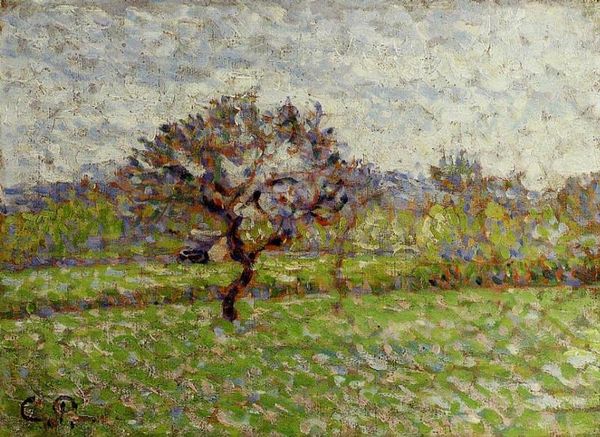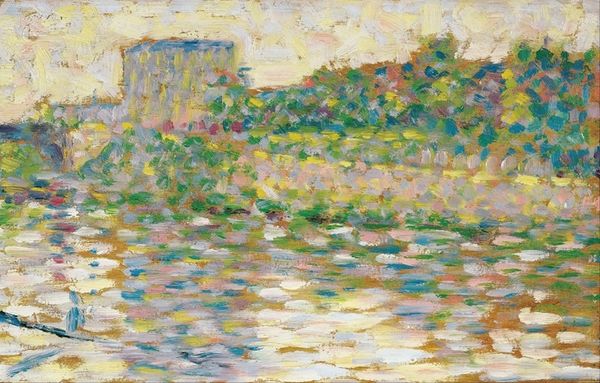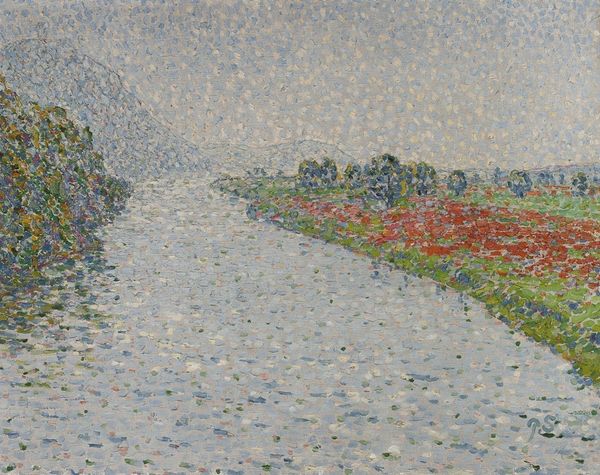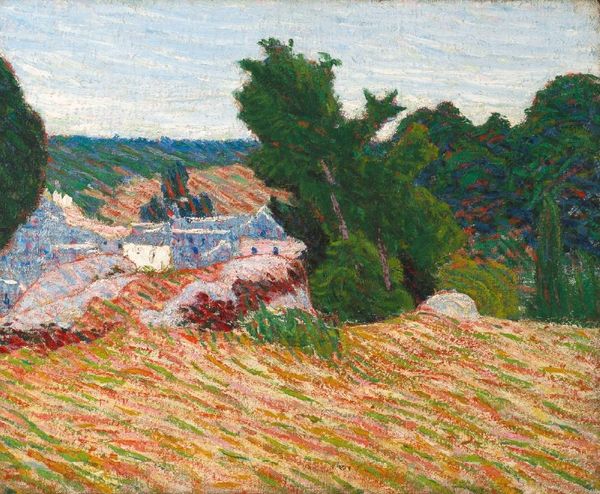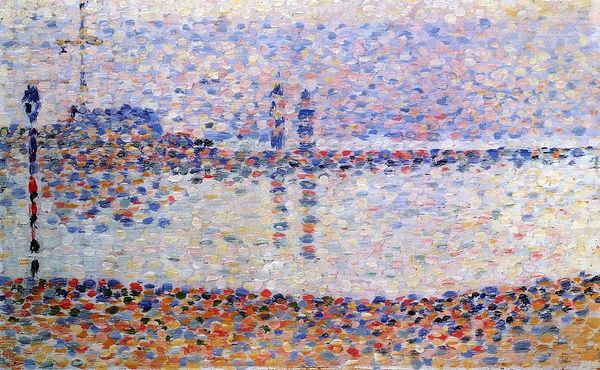
painting, plein-air, oil-paint
#
tree
#
painting
#
impressionism
#
plein-air
#
oil-paint
#
landscape
#
impressionist landscape
#
oil painting
#
post-impressionism
Dimensions: 16 x 24.5 cm
Copyright: Public domain
Curator: Looking at Georges Seurat’s "Landscape at Grandcamp" from 1885, what's your first impression? It’s currently held at the Palais des Beaux-Arts de Lille. Editor: Initially, I'm struck by the tangible nature of it; you can almost feel the thick layers of oil paint. It gives the landscape a weighty, grounded feel, despite being a seemingly fleeting impression of a scene. Curator: Absolutely. Consider Seurat’s embrace of "plein-air" painting and how this approach informs the materiality of the piece. The build-up of paint isn't just aesthetic; it reflects a working process of responding directly to the landscape and light conditions on-site. How do you see that playing out, historically? Editor: Historically, this connects with the broader Impressionist project of capturing ephemeral moments, yet Seurat clearly pushes beyond mere optical impression. The solid application of paint suggests a desire to construct a more enduring, material record of his encounter with nature. We need to see how that fits into the institutional taste for fleeting glimpses of everyday life. Curator: It's interesting to think about Seurat’s class position here, isn’t it? Who has access to leisure, to coastal scenes? Then look at the marks themselves. Do these techniques signal the rise of industrial paints available in tubes and brushes? He is innovating in how labor and materials are brought to bear. Editor: Precisely, and it pushes us to consider the audience. What type of societal power dynamic does this scenery and treatment signal in the late 19th century when shown in galleries and salons? This art is meant for educated, wealthy merchants who value 'innovative' representation over political substance. Curator: Yes! By concentrating on the physical means of art production – from tubes of paint to methods of applying it – and how the labor involved impacted the visual representation, Seurat's practice is laid bare for all to witness. The "truth" lies within the material. Editor: An apt conclusion, don't you think? It offers such fascinating social commentary as to how class is not just visually rendered in landscapes but rendered into our history by those in power. Curator: Agreed. I always come back to the brushstrokes, or rather, the physical dabs of pigment and the questions of manufacturing and labor that they stir in me. Editor: Likewise, each look pulls us closer to unveiling who shapes both what, and who is appreciated by art in public consciousness.
Comments
No comments
Be the first to comment and join the conversation on the ultimate creative platform.
